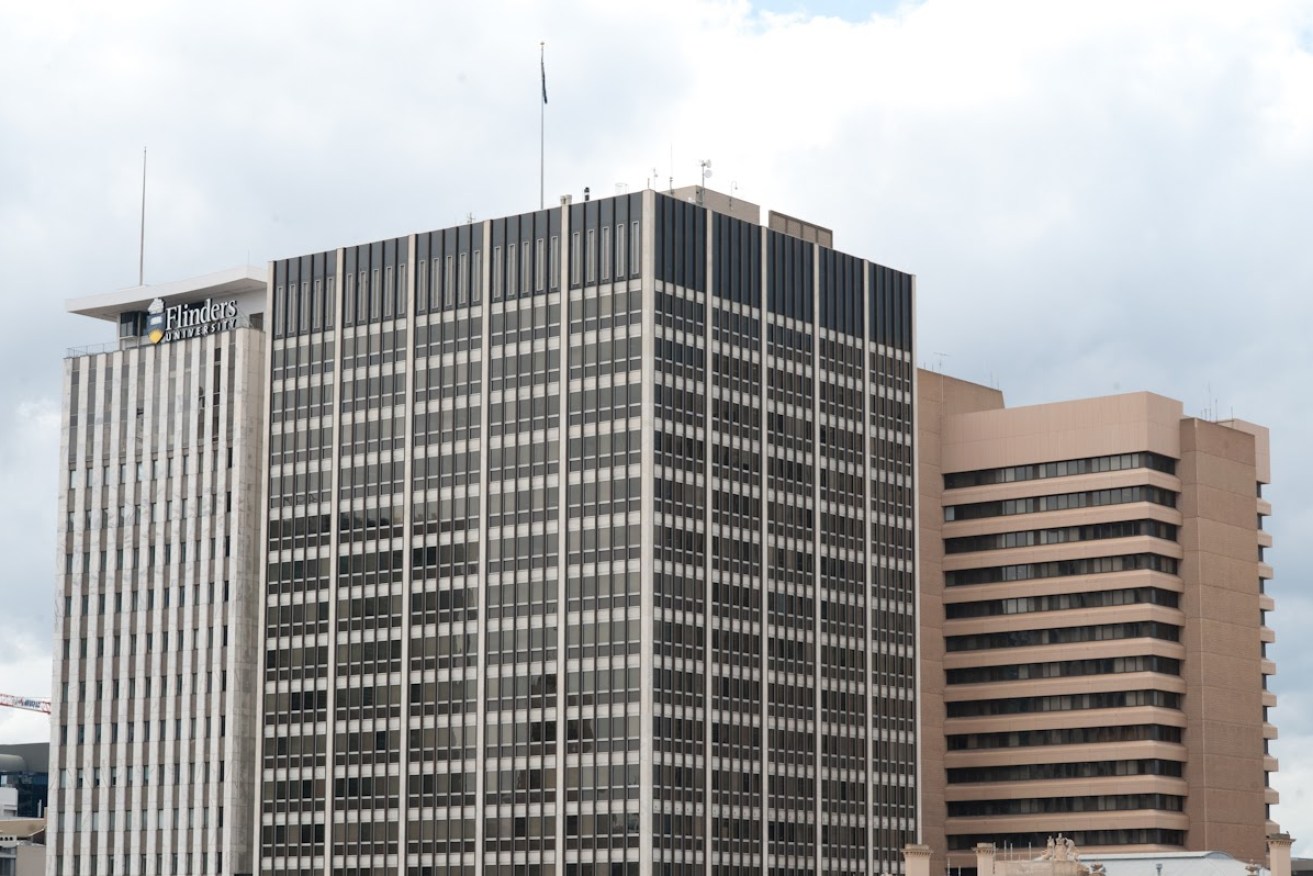Govt abandons sale of State Admin Centre
EXCLUSIVE | After almost a decade of failed attempts to sell its Victoria Square headquarters, the State Government has decided to keep the landmark State Administration Centre in public hands.


The State Administration Centre, with the education building visible to the right.
The building was part of a December 2008 Government plan to pay down debt by selling a package of properties in the precinct, but it’s proven to be a tough task.
At the time, the sale, which included the State Administration Centre housing the Premier’s offices and a range of public service functions, the nearby Flinders Street education building and Wakefield House, was expected to raise more than $400 million. The historic Torrens Building university hub was later added to the package. The Government finally settled on a preferred bidder in 2015 for only around half of the original hoped-for price.
Negotiations with the preferred bidder, Financial Mutual Australia, fell through. In 2016, another deal with South Australian property developer Commercial & General collapsed, with the company forfeiting its $5 million deposit when it failed to settle on the property portfolio by December.
The Government tried again this year, asking state-owned corporation Funds SA to consider buying the properties. Funds SA, which invests on behalf of South Australia’s public sector superannuation funds, decided against pursuing a deal.
Treasurer Tom Koutsantonis, buoyed by success in July in selling the Government’s property at 24 Flinders Street, has now decided to remove the State Administration Centre from the market and attempt to sell the other properties as a package.
He insists the decision will not affect the budget bottom line, saying the proceeds “are not treated as revenue and as such will not impact the budgeted operating surpluses of the budget”.
The Treasurer said the original decision to sell the State Administration Centre was made in “a different economic environment” and he had now decided it was a strategic asset that should remain in public hands.
“We’ve worked hard to cut our cloth, pay down debt and deliver surpluses since that time, and given the strategic importance of the State Administration Centre, it makes sense to keep it in public hands,” he said in a statement.
“In light of the successful sale of the property at 24 Flinders Street there remains a strong case to pursue the sale of the other properties in the portfolio. These are high-value assets with the potential to triggered significant economic activity if purchased and developed by the private sector.”
The state’s net debt has skyrocketed since 2008, in the early days of the global financial crisis. Back then, the State Budget pegged net debt at around $80 million, but predicted an impending blowout. This year’s State Budget estimates net debt for 2017-18 will be just over $6 billion.
Koutsantonis told InDaily that the 2007/08 Budget had not been affected by the global financial crisis, which then required “significant investment” to stimulate the economy.
“The State Government received significantly more than expected from the commercialisation of the Motor Accident Commission and Land Titles Office, which has helped pay down debt,” he said.
“This means there is less need to pay down debt levels through the sale of other assets.”
However, he confirmed the proceeds from the sale of the remainder of the State Administration Centre precinct would be used to reduce net debt.
The new precinct for sale will include the education building at 31 Flinders Street, Wakefield House at 30 Wakefield Street, the Torrens Building on Victoria Square, and vacant land in Victoria Place and Hemmings Place.
The Property Council’s SA executive director, Daniel Gannon, said the Government was to blame for the lack of a sale because of the way it chose to package the assets.
“If the Government offered a 12-year lease on each individual building under net lease conditions rather than as a package of buildings with one gross lease covering multiple assets, it would have attracted far greater market appeal,” he said.
“If a building is taken to the market on a net lease basis and investors have confidence and certainty about income streams throughout the process, then a positive outcome would have been maximised.
“When any other building is taken to the market – like 77 and 80 Grenfell Street at the moment, for example – there is certainty of net income because investors know what they are buying.”
He said the Government’s previous approach injected uncertainty into the deal.
“What investors don’t want is uncertainty and risk, but the Government took the wrong approach in selling these assets every step of the way and made it difficult for buyers to determine the true net income. All sophisticated building owners and investment houses need that type of certainty.
“By breaking down this package of assets and providing net lease conditions, the Government would have opened up a whole new market of investors and increased the purchasing appeal to buyers.”




